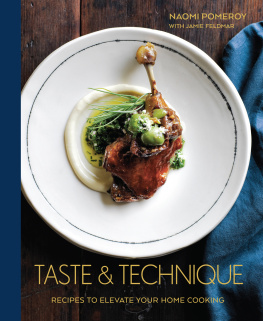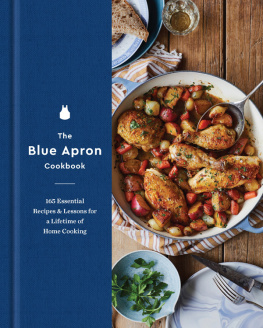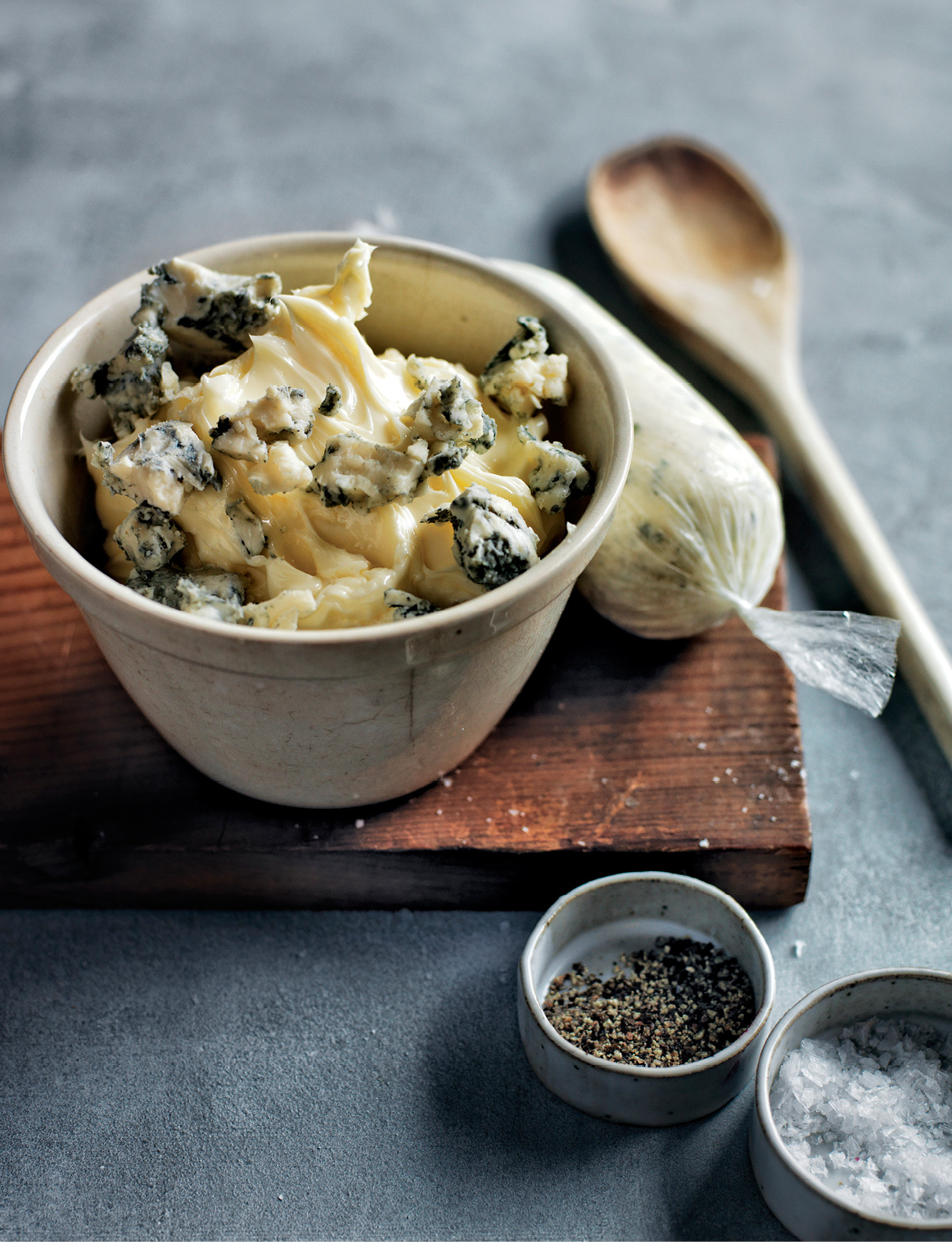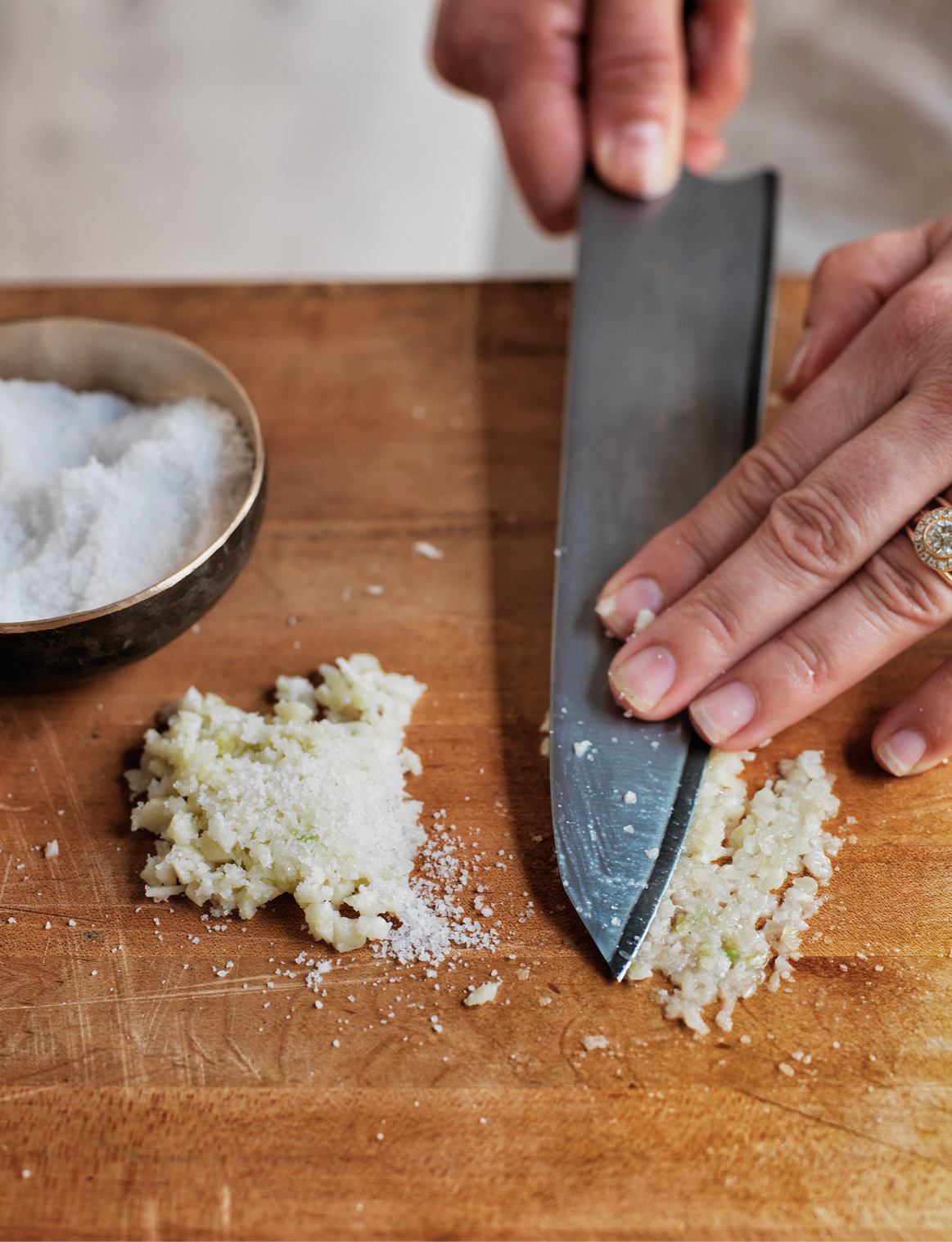
Pantry
Consider these recipes your secret weapons in the kitchen. Not all of them are necessary to complete the dishes that call for them, but they add a serious punch of flavor and texture. The recipes here are all easy to make, and even though many yield more than what youll actually end up using, once you have these items available, youll find yourself constantly reaching for them. Many keep well and can be used across a variety of recipes. For example, throw some pickled mustard seeds into the pan the next time youre making chutney, or add poached fruit to a cheese plate. I like to have at least half of the items here on hand at all times.
Three recipes in this chapterherb salad, fried shallots, and fried garlic chipsare garnishes. These are my personal T.O.E.s, or touches of elegance, as my former cook Mira used to say. When you have a finished dish that looks like a 10, but you want to turn it up to 11, add a T.O.E.that final touch that shows you really took the time to make the plate perfect. I use the herb salad for color and acid almost every time I finish a plate, and the fried shallots and garlic are great for anything that needs a layer of umami, salt, and crunch.
Blue Cheese Butter
This basic technique for whipping butter with salt and pepper works well with a variety of additions, from the blue cheese used here to chopped herbs (use cup) or sauted mushrooms that have been squeezed of their liquid (use cup). Be sure to use the highest-quality butter you can find and a very dry and crumbly blue cheese. A wet, creamy cheese will emulsify into the butter and turn it an unappealing gray color. Use this compound butter on everything from steak to toast.
MAKES ABOUT CUP
4 tablespoons butter, at room temperature
teaspoon salt
teaspoon freshly ground black pepper
1 ounces dry blue cheese, crumbled
Make sure the butter is very soft yet not at all melted. In a small bowl with a wooden spoon, beat the butter, salt, and pepper until fluffy, about 1 minute. Add the blue cheese and stir briefly to combine. The butter should have a slightly irregular consistency, with crumbles of blue cheese scattered throughout.
Lay an 18-inch piece of plastic wrap on the countertop. Spoon the soft butter onto the center of the plastic wrap in a cylindrical log shape about 6 inches long by 2 inches wide. Fold the edge of the plastic wrap thats closest to you over the top of the butter and smooth the log into an even shape with your hands. Make sure the plastic wrap isnt tucked into the log itself or it will create a crease in the butter when chilled. Wrap the log fully in the plastic wrap and twist the ends to form a tight log. Refrigerate until solidified, about 2 hours.
Let the butter stand at room temperature for about 30 minutes, then unwrap and cut into slices. Let the slices soften at room temperature for 20 to 30 minutes before serving. Store any leftover butter tightly wrapped in plastic and sealed in a resealable plastic bag. It will keep for up to 1 week in the refrigerator and up to 1 month in the freezer.
Lemon Confit
This is an ingredient I like to have around for adding an unexpected pop of flavor to many dishes. I use it anywhere you might use preserved lemon, such as in ). This is probably my number one go-to condiment in the Pantry section. You will need to plan ahead, however, as the recipe takes 24 hours to complete.
MAKES ABOUT CUP
teaspoons fennel pollen
2 teaspoons sugar
1 teaspoons salt
2 cups extra-virgin olive oil
2 or 3 cloves garlic
Cut away most of the spongy white pith of the rinds, leaving only the yellow peel and about inch (about the thickness of a quarter) of the pith. Cut the trimmed rinds into strips about inch wide and 1 inch long (see ).
Place the lemon strips in a 2-quart saucepan and add the fennel pollen, sugar, salt, oil, and garlic. Place over low heat and slowly bring to a very gentle simmer, with tiny bubbles no bigger than those in Champagne, stirring frequently to ensure the sugar and salt dissolve. Once the mixture begins to gently bubble, keep a close eye on the saucepan, ensuring the heat is as low as possible. I use a to keep the heat low enough; if the heat gets too high, the lemon rind will fry and become tough rather than soft. Simmer for about 20 minutes, until a piece of lemon removed from the oil is tender all the way through.
Remove the pan from the heat and set aside, covered, at room temperature to allow the flavors marry overnight. Store in an airtight container in the refrigerator for up to 3 months.
Garlic Paste
I make this paste when I want to impart a strong, even garlic flavor to a dish but dont want it to taste too hot. Working salt into the garlic with a knife helps mellow its bite and distributes its flavor evenly.
Never buy peeled garlic unless you are slicing the cloves for . Prepared garlic has a rancid, extremely off-putting flavor, and once you get used to the real thing, you wont mind the labor of peeling a few glorious cloves. The quantities here can be easily doubled.
MAKES 1 TEASPOON
1 large clove garlic
teaspoon salt
On a cutting board reserved for savory foods (see ), crush the garlic by carefully holding the blade of a chefs knife flat against the garlic and smashing down on the blade with the soft side of a closed fist. Roughly chop the garlic and sprinkle the salt on top. Run the flat side of the knife blade back and forth over the garlic, applying pressure with your other hand and flipping the knife over with each pass, to massage the salt into the garlic and make a fine paste.


















